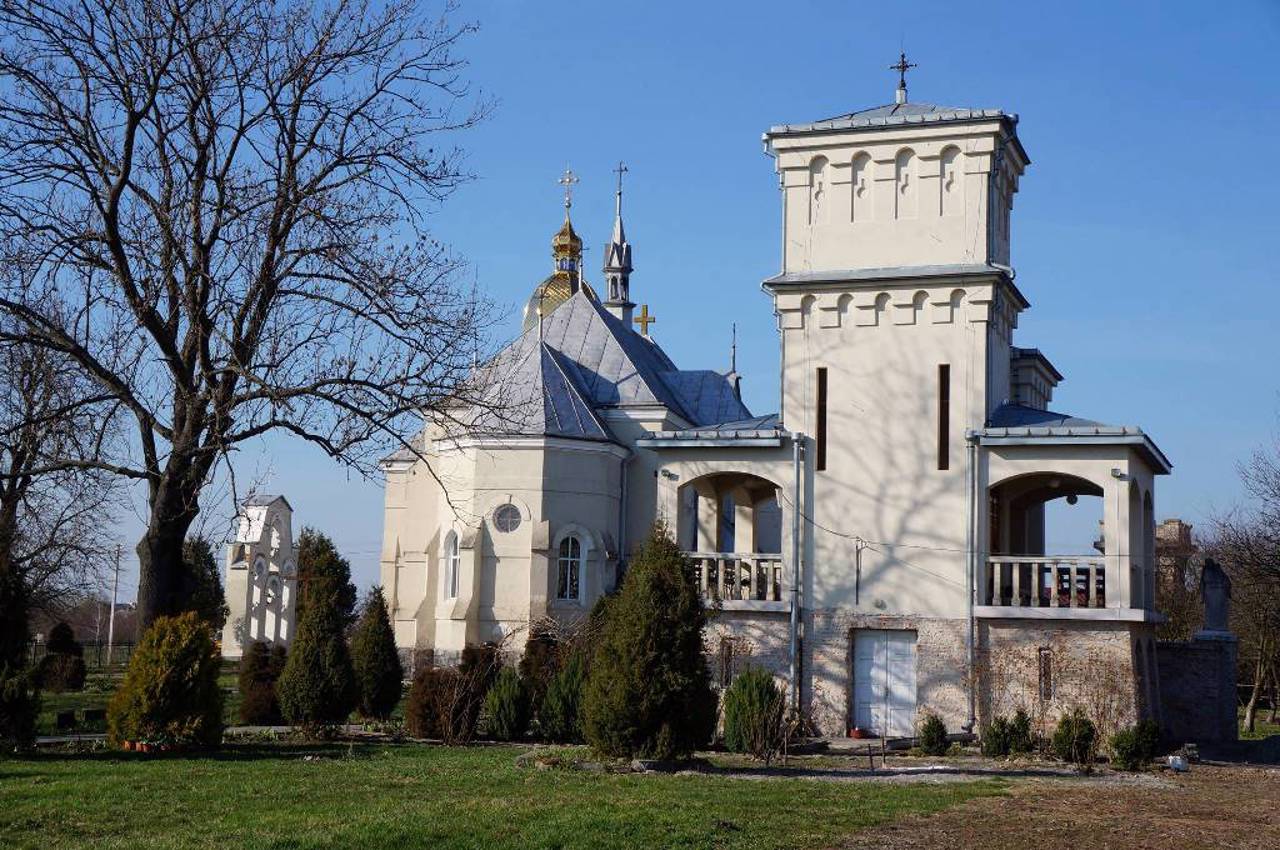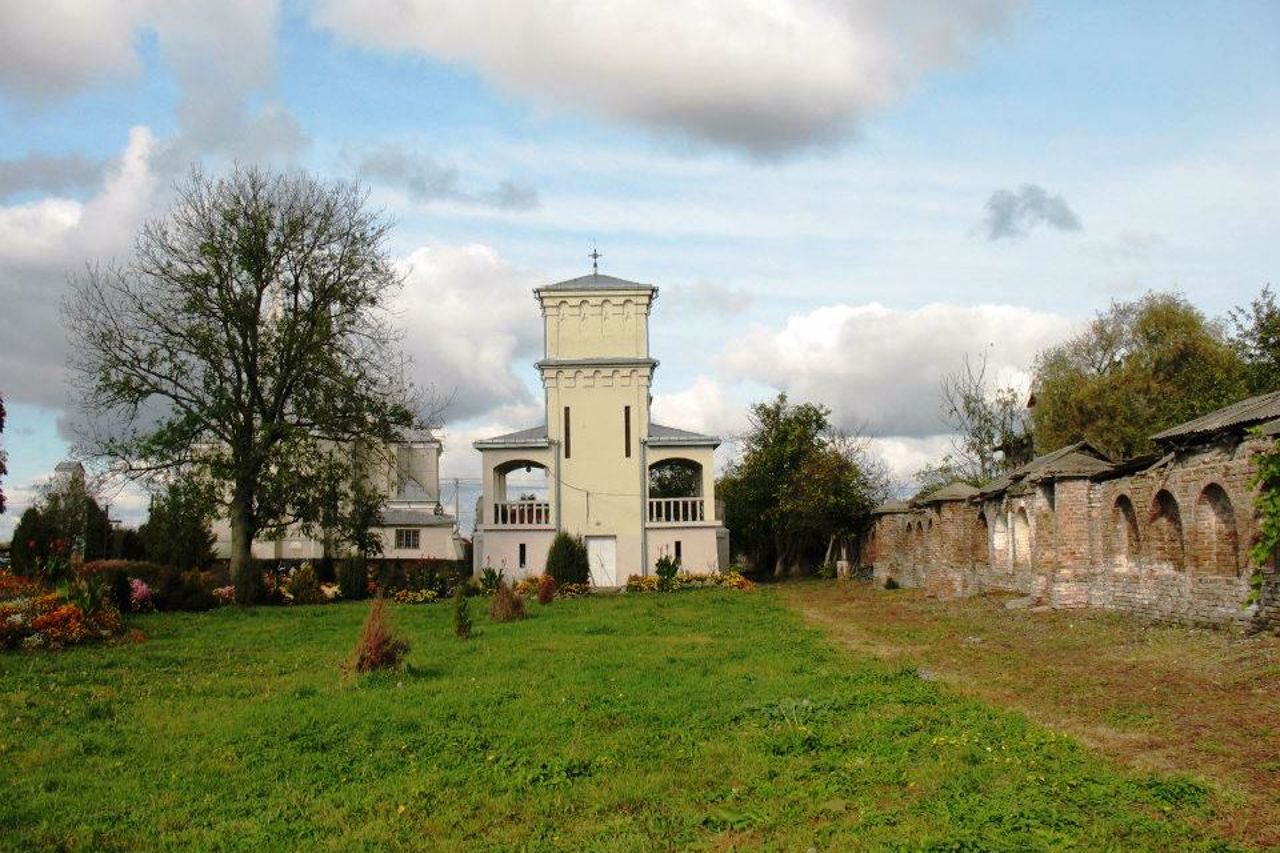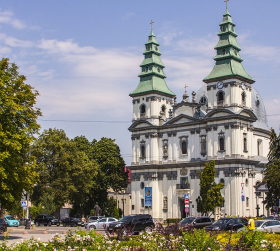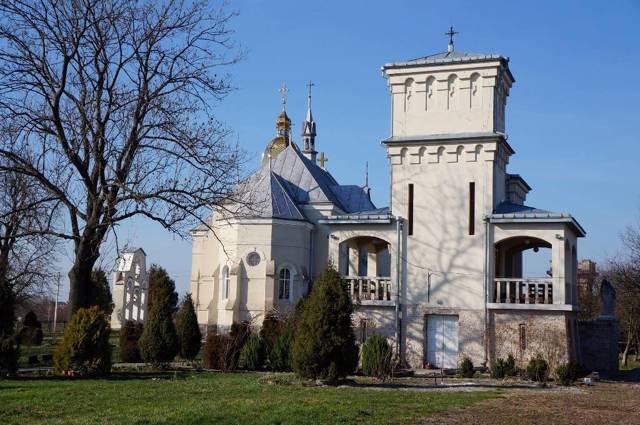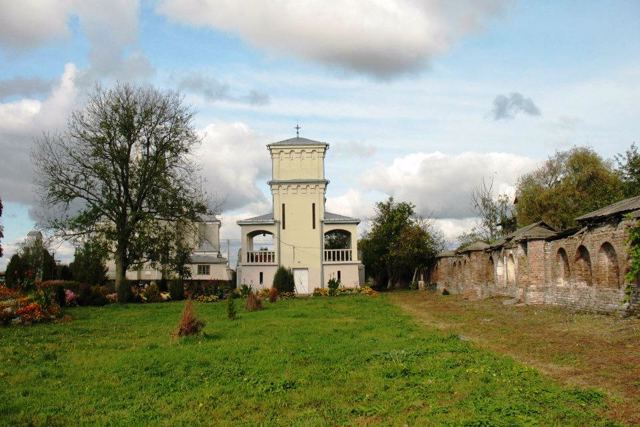Functional temporarily unavailable
Zamochok, Belz
Castle / fortress
Temple
Architecture
General information about Zamochok (Belz)
The oldest part of Belz, at the confluence of the Rechytsya stream with the Solokiya river at the entrance to the city from the Velyki Mosty side, is called Zamochok, because it was here that the historic Belz castle was located. Its first wooden fortifications were erected in the 11th century, but soon the city was destroyed by the Mongol-Tatars.
During the Lithuanian-Polish times, the castle was revived. It remained wooden, but was strengthened by powerful earth ramparts and protected by a defensive moat, the traces of which can still be traced. The castle has not been preserved to this day, but later religious buildings remind of it, giving the territory of the Zamochok a romantic look.
In 1906-1911, the church of the Blessed Virgin Mary was built on the castle grounds in ...
The oldest part of Belz, at the confluence of the Rechytsya stream with the Solokiya river at the entrance to the city from the Velyki Mosty side, is called Zamochok, because it was here that the historic Belz castle was located. Its first wooden fortifications were erected in the 11th century, but soon the city was destroyed by the Mongol-Tatars.
During the Lithuanian-Polish times, the castle was revived. It remained wooden, but was strengthened by powerful earth ramparts and protected by a defensive moat, the traces of which can still be traced. The castle has not been preserved to this day, but later religious buildings remind of it, giving the territory of the Zamochok a romantic look.
In 1906-1911, the church of the Blessed Virgin Mary was built on the castle grounds in the Art Nouveau style with Neo-Gothic elements, according to the project of the architect Kalikst Krzyzhanowski (now it is the church of Saint Nicholas of the OCU).
In 1933-1938, the architect Witold Rawski completed the complex of sacred buildings at the Zamochok. Next to the church, he built a belfry in the form of a castle tower in the Art Nouveau style with elements of romanticism. One of the historical coats of arms of Belz in the form of a griffin is placed on its facade. Another coat of arms of Belz - a harmash with a cannon - can be seen on the triarch entrance gate. The chapel of Saint Valentyn and the Way of the Cross were also built in the modern style in the form of a brick fence with small chapel towers resembling defensive walls.
The complex of sacred buildings of the Zamochok tract is part of the State Historical and Cultural Reserve in the city of Belz.
Найдавніша частина Белза при впадінні струмка Речиця в річку Солокія на в'їзді в місто з боку Великих Мостів зветься Замочком, оскільки саме тут розташовувався літописний Белзький замок. Його перші дерев'яні укріплення були зведені ще в XI столітті, проте невдовзі місто було зруйноване монголо-татарами.
За литовсько-польських часів замок був відроджений. Він залишався дерев'яним, але був зміцнений потужними земляними валами та захищений оборонним ровом, сліди яких досі простежуються. До нашого часу замок не зберігся, але про нього нагадують пізніші сакральні споруди, що надають території Замочку романтичного вигляду.
У 1906-1911 роках на замчищі був збудований костел Пресвятої Діви Марії у стилі модерн з елементами неоготики за проєктом архітектора Калікста ...
Найдавніша частина Белза при впадінні струмка Речиця в річку Солокія на в'їзді в місто з боку Великих Мостів зветься Замочком, оскільки саме тут розташовувався літописний Белзький замок. Його перші дерев'яні укріплення були зведені ще в XI столітті, проте невдовзі місто було зруйноване монголо-татарами.
За литовсько-польських часів замок був відроджений. Він залишався дерев'яним, але був зміцнений потужними земляними валами та захищений оборонним ровом, сліди яких досі простежуються. До нашого часу замок не зберігся, але про нього нагадують пізніші сакральні споруди, що надають території Замочку романтичного вигляду.
У 1906-1911 роках на замчищі був збудований костел Пресвятої Діви Марії у стилі модерн з елементами неоготики за проєктом архітектора Калікста Кшижановського (нині це церква святого Миколая Православної церкви України).
У 1933-1938 роках архітектор Вітольд Равський добудував комплекс сакральних споруд на Замочку. Поруч із костелом він звів дзвіницю у вигляді замкової вежі в стилі модерн з елементами романтизму. На її фасаді розміщено один з історичних гербів Белза у вигляді грифона. Інший герб Белза – гармаш з гарматою – можна побачити на триарковій в'їзній брамі. У модерновому стилі були збудовані також каплиця Святого Валентина та Хресна дорога у вигляді цегляної огорожі з маленькими вежами-каплицями, що нагадують оборонні мури.
Комплекс сакральних споруд урочища Замочок входить до складу Державного історико-культурного заповідника в місті Белзі.
Practical information about Zamochok (Belz)
Last update
8/8/2025
| Categories | Castle / fortress, Temple, Architecture |
|---|---|
| Date of foundation | XI-XX centuries |
| Address |
Mykhayla Hrushevskoho Street, 6
Belz |
| Coordinates |
50.37858° N, 24.01853° E
|
| Phone | +380 3257 52 505, +380 50 739 5968, |
|
https://www.facebook.com/group... |
|
| Additional services |
Аccessibility information
Have you visited Zamochok in Belz?
Add practical or descriptive information, photos, links
What to see, where to go next?

